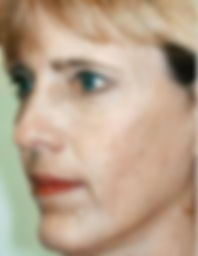
Facials and Chemical Peels

Chemical peels can be done on the face, neck, or hands. They can be used to:
-
Reduce fine lines under the eyes and around the mouth
-
Treat wrinkles caused by sun damage and aging
-
Improve the appearance of mild scars
-
Treat certain types of acne
-
Reduce age spots, freckles, and dark patches (melasma) due to pregnancy or taking birth control pills
-
Improve the look and feel of skin
Areas of sun damage may improve after chemical peeling. After a chemical peel, skin is temporarily more sensitive to the sun, so wear sunscreen every day. It should say "broad-spectrum" on the label, meaning it protects against the sun's UVA and UVB rays. Limit your time in the sun, especially between the hours of 10 a.m. and 2 p.m., and wear a wide-brimmed hat.
Glycolic Acid Peel
As far as chemical peels go, glycolic acid peels are among the mildest and most popular. That's largely because glycolic acid is considered to be natural. It comes from sugar cane and belongs to a family of acids called alpha-hydroxy acids AHA or fruit acids .
These superficial or light peels are the gentlest type of peels available and one of the true ‘lunchtime’ aesthetic procedures. They only remove the top layer of the skin, known as the epidermis, and can give your skin and instantly brighter look as well as a smoother, more even texture. They can be used to minimise fine lines and wrinkles, sun damage, mild acne scarring, age spots and dry or flaking skin.
These types of peels use active ingredients to penetrate and deliver anti-oxidants and vitamins deep into the skin encouraging the new cells to grow stronger and healthier. A course of between 6 and 8 treatments done every other week is usually recommended to achieve the best results.
Superficial peels do not hurt, you only feel a slight tingling or stinging sensation, and have virtually no recovery time. You can be a little bit pink afterwards and may get some mild flaking of the skin but this can be disguised with make-up. With a superficial peel you would be able to return to work or go out straight afterwards and no one would know you had had the treatment done.
Salicylic Acid Peel
It is becoming common for beta hydroxy acid (BHA) peels to be used instead of the stronger alpha hydroxy acid (AHA) peels due to BHA's ability to get deeper into the pore than AHA. Studies show that BHA peels control sebum excretion, acne as well as remove dead skin cells to a certain extent better than AHA due to AHAs only working on the surface of the skin. Salicylic acid is a beta hydroxy acid.
Used as a chemical peel, salicylic acid can be a very effective treatment against many different types of skin conditions. At the forefront, salicylic acid peels are used to dramatically reduce the appearance of acne and scars associated with the condition. However, salicylic acid peels have also proven to be effective against blackheads, whiteheads, signs of premature aging, wrinkles, calluses, psoriasis and uneven skin tone in general. In short, salicylic acid peels quite literally remove damaged skin to reveal the healthier and more aesthetically pleasing skin underneath.
Salicylic acid peels work by removing excess sebum (facial oil composed of wax, lipids and dead cells) along with attacking bacteria deep within pores. Due to this, it must be applied directly to the face in concentrations of up to 30. A thin, even layer of concentrated salicylic acid is applied directly to the face only after it has been thoroughly cleansed. This is to prevent any type of debris or bacteria from tainting the vulnerable new skin that will be revealed by the peel.
Upon application, the acid is then left to sit on the skin for approximately 2 – 5 minutes before being removed
While benefits will be noticeable directly after the first use, salicylic acid peels are generally performed 6 or more times on different occasions depending on how severe a skin condition may be. Such benefits will further be made prevalent as additional peels are performed until a desired effect is achieved. 6 to 8 treatments done every other
week is recommended.
What to expect after a chemical peel
After you get a peel, your skin can be red for a few hours, maybe even the whole day. To ease this redness, you can use cooling products (i.e. aloe vera gel) or cooling masks or simply wrap your skin in a cold towel. What feels nice to do is stick your face in a cool-mist humidifier.
Your skin will also be a bit drier and you may physically flake or peel in certain places. If you do flake, don't pick at it! Let your skin peel naturally or you risk damaging it. You can help your skin a bit by applying moisturizer more frequently throughout the day and drinking extra water. You can even coat your skin with a thin layer of aloe vera gel, vaseline or aquaphor to ease any discomfort. There is pretty little down time associated with glycolic and salisylic acid peels. In fact, most people don’t peel at all unless the peel is very, very strong.
Before and After Photos
of Chemical Peels








© 2013 by Cosmetic Laser, Inc. 3026 Eastpoint Parkway, Louisville, KY 40223





